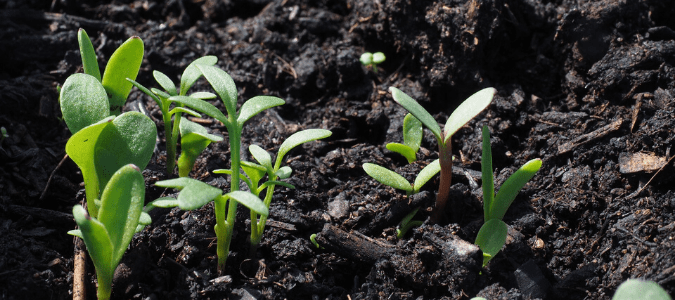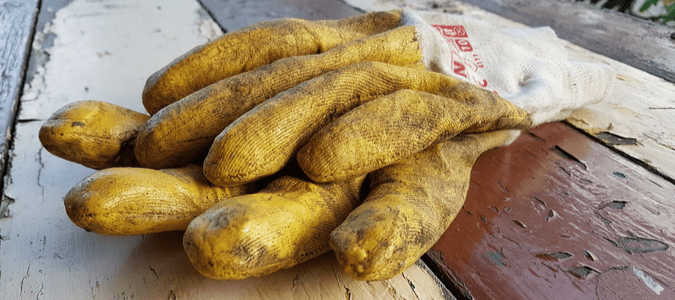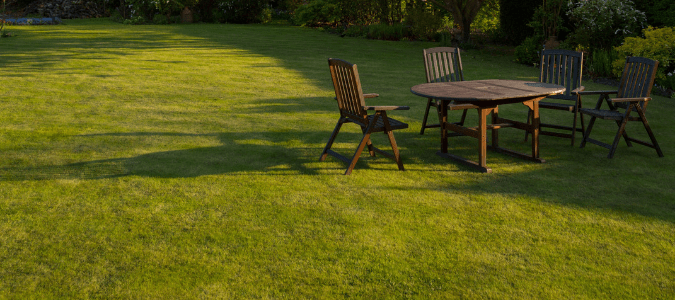
Many homeowners strive to find the perfect combination of watering, mowing and fertilization to create that coveted lush, weed-free lawn we all want, but they overlook the importance of using a pre-emergent herbicide to keep weeds at bay. If you love having a healthy lawn, you may be wondering about these products, also called “preemergence herbicides,” and how to use them. How long do pre-emergents last? How do they work? And when is the best time to apply them to your yard?
Fortunately, pre-emergents are a relatively straightforward and effective step to add to your lawn care routine, as long as you make sure to select the right product for your yard and add it at the right time. The name “pre-emergent herbicide” refers to the fact that these products are to be used before the weeds emerge—which really means before their seeds have taken root.
Typically, pre-emergents will be effective for anywhere from two months to about four months, depending on environmental factors like rain and the product that you use. Pre-emergents work by creating a protective barrier of herbicide at the roots of your grass, at the soil level, where weed seeds lie dormant through the winter, waiting for spring’s warmer temperatures to germinate. Pre-emergents prevent that germination and can be helpful in preventing grass weeds, such as crabgrass, dallisgrass and doveweed, as well as dandelions and other annuals from invading your lawn.
Pre-emergent herbicide products are best applied in late winter or early spring, when the soil is still cool—ideally between 50 and 55 degrees Fahrenheit. For best results, applying a second round of pre-emergents sometime in early or mid-fall is recommended, a step which many homeowners either don’t know to do or neglect to do. Take care never to use pre-emergents on newly laid sod or recently overseeded turfgrass lawns, as it can damage these grasses before they are able to become established.
Furthermore, when using pre-emergents, it’s important to read the label on the package of the product you select to make sure it is safe to use in your particular climate and on your yard’s type of grass. Some products aren’t good for St. Augustine grass, for example, or in gardens where fruits and vegetables are growing. Other products will list highly specific application procedures and conditions, such as outdoor temperature limits. Even “ready to spray” products can have specific requirements for how to administer them, so be sure to read the label carefully before getting started.
Pre-emergents are one of the most effective ways to keep the more challenging weeds at bay in your yard—weeds like crabgrass that many gardeners find extremely challenging to deal with. Keep in mind that these herbicides are best used in combination with other weed-preventative efforts, such as taking care to avoid overwatering, mowing your grass too often or mowing your grass too short (no shorter than two inches is a good rule of thumb) and following a regular fertilization schedule that is tailored to your regional climate and your soil’s unique balance of nutrients.
For many people, the satisfaction of a lush lawn can be lost in the actual work it takes to get there. In this case, it’s often both more efficient and more cost-effective to hire a lawn care specialist who can keep track of the right times of year for fertilizing your yard, using pre-emergent herbicides to prevent weeds from taking root and mowing on a regular basis to keep your lawn at its best. These specialists can also typically help, or can refer you to someone who can help, with other landscaping projects as well, such as planting new flowers.
If you’d like to try your hand at maintaining a healthy, weed-free lawn, keep reading to learn more about applying fall pre-emergent and other important fall lawn care tips.

Fall Pre-Emergent: When and How To Apply It To Your Yard
Some home gardeners use pre-emergents only once a year, in late winter or early spring, and have success with this single, annual application of weed preventer. But for people who live in warmer regions where lawns go through a second growing phase in the fall, applying a fall pre-emergent as well is important. This will help to prevent fall and winter weeds as well as weed seeds that would otherwise overwinter and then germinate the following spring. Most pre-emergents should not be applied more than twice a year, and multiple applications should be scheduled at least two months apart.
Timing is important when it comes to using pre-emergents, and it can be a bit trickier to determine the right timing for a fall application than it is for the application in early spring. There is typically a wider window in the fall during which it’s a good idea to use pre-emergents.
Whether your yard has cold-season or warm-season grass, it’s best to apply a fall pre-emergent product when the soil has consistently been around 70 degrees Fahrenheit for five days in a row. Depending on the temperatures where you live, that might happen anytime from late August through the end of October. Inserting an indoor/outdoor thermometer about an inch deep into the soil can reveal the soil’s temperature, but 70-degree soil usually corresponds with nighttime outdoor temperatures consistently dropping below 70 degrees.
You can prep your lawn before applying pre-emergents by mowing prior to help ensure the herbicide will easily reach the soil. Take care not to apply pre-emergents to newer lawns, since these products can interfere with the grass’s ability to become established. It’s also wise not to apply a pre-emergent to grass that is already under stress from drought or heat, since pre-emergents introduce further stress that could further damage your turf.
Whichever pre-emergent weed prevention product you select to use in your yard, make sure to read the directions on the package before applying it. Sprayers must be calibrated according to the manufacturer’s instructions to ensure a proper spread of the product. In addition, watering in with a hose must be done carefully in order to strike the right balance between enough water to activate the herbicide but not so much that it washes the product away. Furthermore, some pre-emergents should be watered in immediately, while others should sit for a full day before watering in occurs. Some people apply fall pre-emergents just before a forecasted rain, to allow for the natural watering-in that will occur.
All of these factors can be a lot to consider. For this reason, many people find it easier to hire a lawn care professional with the knowledge and experience needed to be successful in the ongoing battle against weeds, along with being able to help out with the routine lawn maintenance required to support a healthy, lush lawn.

Determining Your Fall Lawn Care Schedule
Following a regular fall lawn care schedule is a good way to be consistent about how you help your grass and plants thrive through all four seasons. Still, it can be tough to know which set of tasks is right for your region, your lawn and your particular soil. Here are some basics on taking care of your grass in the fall that can help your turf successfully weather winter’s colder temperatures and thrive again come spring.
If your lawn is planted with a warm-season grass such as zoysia, St. Augustine or bermuda grass, late fall and winter can offer a welcome reprieve from mowing quite so often as during the peak growing season. Warm-season grasses begin to go dormant when outdoor temperatures start to drop. When soil temperatures reach around 55 degrees Fahrenheit or below, it’s smart to mow less often, or stop altogether, to help prepare the grass for winter. That said, mowing is a great way to mulch fallen leaves in order to protect grass throughout the winter from extreme temperatures and icy precipitation. And in some areas, grass can and will grow year round, so it’s nice to have a lawn service to keep your outdoor spaces looking neat and tidy.
Before soil temperatures get quite that cool, you can apply a pre-emergent herbicide in early fall to help prevent winter weed seeds from germinating once spring returns. Fertilizing your grass once in early fall and once again in late fall or early winter, around the time when you mow for the last time, will also prepare the grass and the soil for overwintering through to spring. Most lawns need a fertilizer that contains nitrogen, but you can have a sample of your soil tested to learn its exact blend of minerals and nutrients, in order to inform you in choosing the right fertilizer product for your yard.
If your yard has bare patches, you can spread grass seed in the fall to help ensure the lawn will get a good head start come spring, particularly since a thick carpet of healthy grass leaves less room for weeds to grow. It’s also smart to aerate in the fall and give your lawn a couple of good, deep waterings to help it recover from the summer’s heat and also root deeply before winter comes. A lawn care specialist can be instrumental in determining the best fall lawn care schedule for your yard and performing the labor to ensure your lawn will thrive—and be as weed-free as possible—come spring.
ABC Can Keep Your Lawn Healthy and Weed-Free
Maintaining a healthy, green lawn takes a lot of planning and hard work. If you would prefer to spend your free time relaxing in your yard instead of working on it, contact ABC Home & Commercial Services. We offer a variety of lawn services and can even help with landscaping projects and other home services, so your yard can look exactly how you want it to without having to lift a finger.
